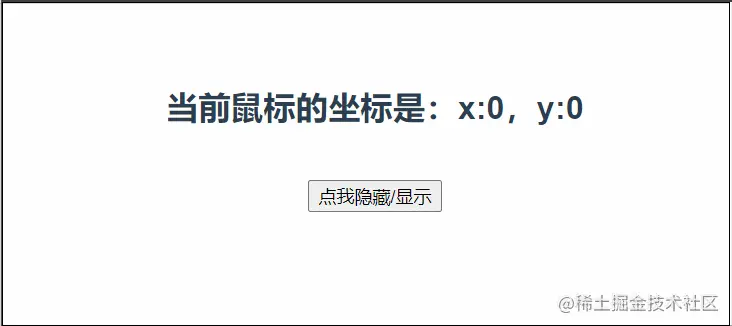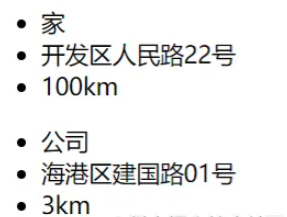Vue 自定义hook
奔跑吧鸡翅 人气:0定义
什么是hook?
- 本质是一个函数,把 setup 函数中使用的 Composition API (组合API)进行了封装
- 类似于 vue2.x 中的 mixin
自定义 hook 的优势:
- 复用代码,让 setup 中的逻辑更清楚易懂
使用
首先我们做一个功能,鼠标点击屏幕,获取坐标:

<template>
<h2>当前鼠标的坐标是:x:{{ point.x }},y:{{ point.y }}</h2>
</template>
<script>
import {onMounted, onBeforeUnmount,reactive} from 'vue'
export default {
name: 'Demo',
setup() {
let point = reactive({
x: 0,
y: 0
})
function savePoint(event) {
point.x = event.pageX;
point.y = event.pageY;
}
onMounted(() => {
window.addEventListener("click",savePoint)
})
onBeforeUnmount(()=>{
window.removeEventListener("click",savePoint)
})
return {
point,
}
},
}
</script>然后改用使用 hooks,在 src 下新建 hooks 文件夹,增加 usePoint.js
import {onBeforeUnmount, onMounted, reactive} from "vue/dist/vue";
function savePoint() {
let point = reactive({
x: 0,
y: 0
})
function savePoint(event) {
point.x = event.pageX;
point.y = event.pageY;
}
onMounted(() => {
window.addEventListener("click",savePoint)
})
onBeforeUnmount(()=>{
window.removeEventListener("click",savePoint)
})
return point
}
export default savePoint;或者简写:
......
export default function() {
......
}在 Demo.vue 中使用:
<template>
<h2>当前鼠标的坐标是:x:{{ point.x }},y:{{ point.y }}</h2>
</template>
<script>
import usePoint from "@/hooks/usePoint";
export default {
name: 'Demo',
setup() {
let point = usePoint()
return {
point
}
},
}
</script>封装发ajax请求的hook函数(ts版本)
hooks 下新建 useRequest.ts
由于用到了 axios,所以安装axios:npm install axios
import {ref} from "vue";
import axios from "axios";
export default function <T>(url: string) {
const loading = ref(true);
const data = ref<T | null>(null);
const errorMsg = ref('');
axios.get(url).then(response => {
loading.value = false
data.value = response.data
}).catch(error => {
loading.value = false
errorMsg.value = error.message || '未知错误'
})
return {
loading,
data,
errorMsg
}
}App.vue:
<template>
<h3 v-if="loading">加载中...</h3>
<h3 v-else-if="errorMsg">错误信息:{{errorMsg}}</h3>
<!-- 对象 -->
<ul v-else>
<li>{{data.name}}</li>
<li>{{data.address}}</li>
<li>{{data.distance}}</li>
</ul>
<!-- 数组 -->
<ul v-for="item in data" :key="item.name">
<li>{{item.name}}</li>
<li>{{item.address}}</li>
<li>{{item.distance}}</li>
</ul>
</template>
<script lang="ts">
import {defineComponent, watch} from 'vue';
import useRequest from "@/hooks/useRequest";
export default defineComponent({
setup() {
// 定义接口
interface IAddress{
name:string,
address:string,
distance:string
}
//const {loading,data,errorMsg} = useRequest<IAddress>("./address.json")//获取对象数据
const {loading,data,errorMsg} = useRequest<IAddress[]>("./addressList.json")//获取对象数据
watch(data, () => {
if (data.value) {
console.log(data.value.length)
}
})
return {
loading,
data,
errorMsg
}
}
});
</script>测试数据有对象类型的 address.json:
{
"name": "家",
"address": "开发区人民路22号",
"distance": "100km"
}还有数组类型的 addressList.json

加载全部内容